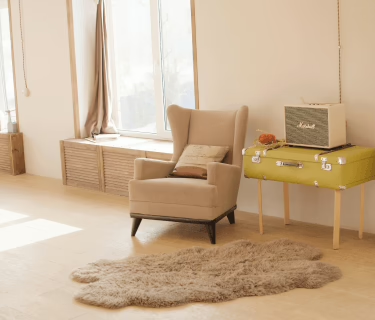Humidifiers are lifesavers in dry seasons, making your indoor air more comfortable and keeping your skin, sinuses, and even furniture from drying out. But while they provide much-needed moisture, they can also turn into a bacteria-breeding, mold-growing nightmare if not cleaned regularly.
If you’ve ever turned on your humidifier and wondered, “Why does my room smell like a damp basement?”—chances are, it’s due to a neglected machine. Learning how to clean a humidifier properly is essential not just for the longevity of your device, but also for the air you breathe. Let’s dive into the best cleaning methods to keep your humidifier in top shape.
Why Cleaning Your Humidifier Is Non-Negotiable
Think of your humidifier like a coffee maker—if you don’t clean it regularly, things get gross fast. A dirty humidifier can cause:
✔ Mold and Bacteria Growth – Stagnant water and moisture create the perfect breeding ground for nasty microbes.
✔ Reduced Air Quality – Instead of refreshing mist, your humidifier might be pumping out contaminated air filled with bacteria, allergens, or white dust (from mineral deposits).
✔ Shorter Lifespan – If mineral buildup isn’t removed, it can clog parts, reduce efficiency, and eventually break your machine.
In short, a clean humidifier equals healthier air, fewer allergens, and a device that lasts longer—all great reasons to make cleaning a priority.
How to Clean a Humidifier: Step-by-Step Guide
Daily Maintenance: The Easy Stuff
A little effort every day can save you from deep-cleaning nightmares later. Here’s what you should do after each use:
- Empty out leftover water – Stagnant water is a bacteria party waiting to happen.
- Rinse the water tank – A quick rinse can help remove any lingering microbes.
- Let it dry – Keeping it dry between uses helps prevent mold growth.
Weekly Deep Cleaning: The Essential Routine
Your humidifier needs a deep clean at least once a week to remove mineral deposits, mold, and bacteria. Here’s how to do it:
Step 1: Unplug and Disassemble
Safety first! Unplug the humidifier and take apart all removable pieces, including the water tank, tray, and filter (if applicable).
Step 2: Clean with White Vinegar
Vinegar is a powerful, natural cleaner that breaks down mineral buildup and disinfects.
- For the water tank: Fill it halfway with equal parts vinegar and water, then shake vigorously and let it sit for 30 minutes.
- For the base and other parts: Soak a sponge or cloth in vinegar and wipe down all surfaces.
Step 3: Scrub Away Residue
Use a soft-bristle brush, toothbrush, or sponge to scrub off any stubborn buildup. Pay extra attention to corners and crevices where mold likes to hide.
Step 4: Disinfect with Hydrogen Peroxide or Bleach (Optional)
If you’ve noticed musty odors or visible mold, take an extra step to disinfect:
- Mix 1 teaspoon of bleach per gallon of water, fill the tank, and let it sit for 10 minutes.
- If you prefer a milder option, use a 3% hydrogen peroxide solution instead.
- Rinse thoroughly with water several times to ensure no chemicals remain.
Step 5: Rinse and Air Dry
Rinse every piece with clean water to remove any vinegar or disinfectant residue. Lay all parts out to air dry completely before reassembling.
Cleaning the Humidifier Filter
If your humidifier has a filter, it needs just as much attention.
- Rinse it under cold water—never use soap, as it can damage the filter.
- Let it air dry completely before putting it back.
- Replace the filter every 1-3 months, or as recommended by the manufacturer.
Common Mistakes to Avoid When Cleaning a Humidifier
Even with the best intentions, some mistakes can make your cleaning efforts less effective. Avoid these:
- Using tap water instead of distilled water – Tap water contains minerals that cause white dust and lead to faster buildup.
- Skipping daily maintenance – Letting water sit for too long encourages bacterial growth.
- Not drying parts properly – Damp areas promote mold growth.
- Mixing vinegar and bleach – This creates toxic fumes. Always clean with one disinfectant at a time.
When to Replace Your Humidifier
Even with regular maintenance, humidifiers don’t last forever. Consider replacing yours if:
- There’s visible mold or mineral buildup that won’t come off.
- The humidifier emits a musty or sour smell even after cleaning.
- The mist output has significantly decreased or become uneven.
- The motor or fan is making strange noises.
If you’re finding yourself cleaning constantly with little improvement, it may be time to invest in a new, easier-to-clean model.
Final Thoughts: Keep Your Air Clean and Fresh
Now that you know how to clean a humidifier, you can breathe easy knowing that your indoor air is free from bacteria, mold, and mineral buildup. Regular maintenance doesn’t take much time, but it makes a huge difference in how well your humidifier functions and the quality of the air you breathe.
And if cleaning your humidifier feels like just another chore on your long to-do list, let the experts help. Check out Denver cleaning services for professional home cleaning solutions to keep your environment fresh, healthy, and stress-free.


